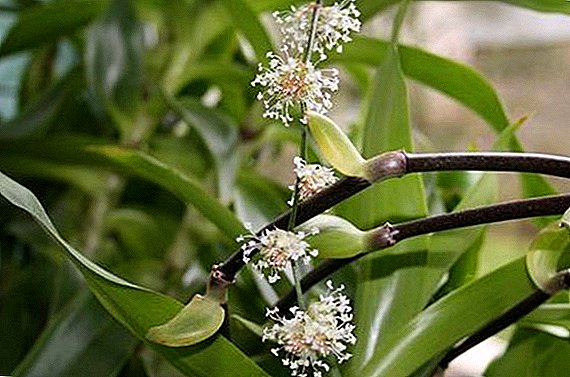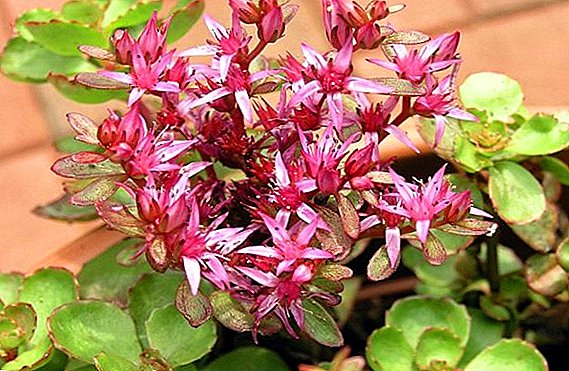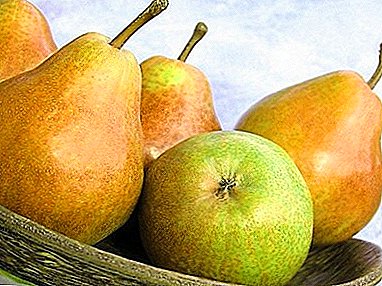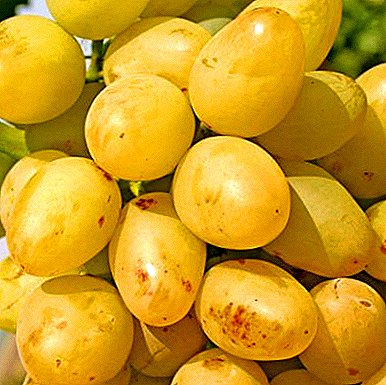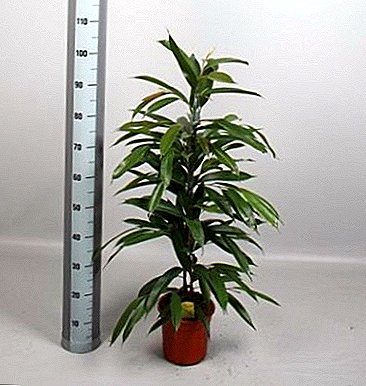
Ficus Amstel King is an unpretentious evergreen.
At home, does not bloom.
refers to feedings and fertilizers. Does not like overmoistening of the soil.
History of origin
 The birthplace of ficus Amstel King is considered the Indonesian island of Java. In reserves in natural spaces grows up to 20 meters.
The birthplace of ficus Amstel King is considered the Indonesian island of Java. In reserves in natural spaces grows up to 20 meters.
Distributed in the Himalayan hills, Thailand, the Philippines, Java, USA.
In young ficus, the bark of a dark brown shade, in an adult, is silver with small silver stripes. The leaves are small, elongated.
In length can reach up to 35 centimeterswide up to 8 centimeters.
Palpation of the leaves is shiny, wavy, drooping, looking down.
They have a sharp base and petiole, reaching 4 centimeters.
Leaf blades curved along the main vein.
The main vein is pronounced, located on the underside of the leaf. The lateral vein is pale.
Sikony rounded or oval. In diameter reach 0.5-1.0 centimeters. Can be axillary, twin or single.
In maturity reach burgundy hue.
Home care
After purchase, the plant is gradually accustomed to the temperature factors and humidity of the air in the room. Ficus prefers bright rooms without direct sunlight.
With a lack of light, the growth of the plant slows down dramatically, the ficus stems are strongly drawn out, the leaves lose their color and begin to crumble.
Ficus does not tolerate moisture stagnation, but loves frequent abundant watering once every three days.
In winter, they should be reduced to once a week.
In the interval between watering should wait until the earth dries out by 2-3 centimeters in depth. Ficus Amstel King is an evergreen. At home, does not bloom.
Crown formation
 Ficus pruning is done in the middle of winter before the beginning of the growing season. The crown is formed as a tiered trunk or bush.
Ficus pruning is done in the middle of winter before the beginning of the growing season. The crown is formed as a tiered trunk or bush.
For enhanced bushiness of the plant shoots must be cut at a height of 10-15 centimeters. After this procedure, the stems from the axillary buds develop.
Elongated stems reaching more than 15 centimeters in length, cut over the axillary bud, located outside the crown.
To produce a tree with a wide trunk and an oval-rounded crown with a bolestep, the main shoot of the plant must be cut at a height of no more than 35 centimeters.
To obtain a floor boom with the same oval-rounded crown, the shoot is cut at a height of no more than 100 centimeters.
With such a procedure, it is necessary to pinch young stems and form a rounded or oval crown of the plant.
The ficus stem should be cleaned from the side stems.
Important! Simultaneous transplantation with the formation of a plant crown is prohibited. This procedure significantly weakens the plant, slowing its growth.
Transfer
The soil can be used any. Well loamy, black earth, sea sand, mixed with mineral fertilizers and peat.
For the active development of the root system, landing is carried out in the largest capacity. Plant transplantation is carried out only in the spring time after the rest period.
Young ficuses less than three years old transplanted annually. Capacities should be chosen 3-4 cm wider than the previous ones.
Adult ficuses are transplanted every three years. Since the plant does not tolerate moisture stagnation, a good drainage system is carried out in the tanks.
In ficuses, reaching the meter mark, they annually replace the substrate layer with a new one, most impregnated with minerals.
Top dressing is made in the spring and summer period of time once every two weeks.
In autumn or winter, fertilizing should be completely eliminated or reduced. up to half a dose once every 60 days.
When the plant grows in an inert substrate, fertilizing is carried out all year round. It is not recommended to feed the plant for 60 days after transplantation, since the substrate contains the required amount of mineral fertilizers.
Breeding
 Amstel King is reproduced in the spring time by cutting.
Amstel King is reproduced in the spring time by cutting.
The least popular breeding versions are planting seeds and vegetative propagation by air layering.
For grafting, you can use the upper half lignified stems.
The use of the stalks remaining after the formation of the crown of the plant is permitted.
The stalk must be cut so that it remains on it. 3-4 sheets (internodes), its length was not less than 7 centimeters, the distance from the knot to the lower cut - 2 centimeters.
Under the cold water tap, the stems are washed from the milk juice.
The cuttings are placed for 30 minutes in a glass jar of water. During 60 minutes planting material is well dried in the open air.
Root germination can be done in sand, soil, water, and a mixture of peat and sand in equal proportions.
Cuttings planted in the substrate by 1-2 centimeters.
In order to prevent the leaves falling off and moisture evaporation, the plant is covered with a glass jar. Periodically, the container is opened.
A month later, after the appearance of the first young leaf, the ficus is transplanted into a container with a diameter more than 10 centimeters. The earth is mixed with sand in proportions 1/4.
Temperature
Preferred temperature in summer from 25 to 30 ° C. In winter, the ficus is not recommended to keep close to batteries and heating devices.
He feels well from 16 to 20 ° C. Amstel King loves swimming under a stream of warm water. This procedure is carried out 1 time in 30 daysth, previously having closed the soil with a package or cellophane.
Flower prefers humidity from 50%.
Tip: If the apartment has dry air, then the flower must be placed on a raised pallet with pebbles, broken bricks or expanded clay.
Every day, Amstel King leaves are wiped with wet wipes and sprayed from a spray bottle with water at room temperature.
A photo
In the photo ficus "Amstel King":




Scientific name
Ficus Amstel King got its name in honor of Simon Binnandyk - Dutch gardener and phytologist. The ficus of this group is an evergreen tree.
It belongs to the mulberry plants of the subgenus Urostigma. Scientific name: Ficus Amstel King. It is the most unpretentious and fascinating plant of the genus Ficus.
Benefit and harm
Ficus Amstel King can absorb negative emotions. Feng Shui experts and soothsayers ascribe magic properties to it.
The plant is able to remove the excitement of man, depression, routine, the wheel of failure.
Dry flower leaves are used in aromatherapy, smoking and incense.
Ficus smoke contributes to the enlightenment of consciousness.
The plant is often set near a laptop and computer. He is able to clean the air and remove the wave radiation technology.
Amstel King leaves are not recommended for nursing and pregnant women.
At hit in eyes of a stem dairy juice of a plant careful washing under a stream of cold water is necessary.
The plant may cause allergic reactions.
Attention! If you feel worse after buying a flower, you need to get rid of it.
Diseases and pests
 If the air is too dry, pests may appear on the plant: thrips, spider mites, scab.
If the air is too dry, pests may appear on the plant: thrips, spider mites, scab.
The powdery mealybug starts in the soil. To eliminate pests, the leaves of the flower are washed under a tap and thoroughly dried. For the destruction of pests use drugs and stimulants.
Well suited "Aktar", "Akarin", "Talstar", "Insecticide Fac." Emulsions or tablets are dissolved in water and sprayed on the plant.
The procedure can be repeated. in 20-13 days. All drugs are dangerous to humans and animals.
Ficus Amstel King does not like dry air, prefers frequent spraying. Well propagated by cutting. Requires systematic crown formation. Does not like direct sunlight. With a lack of light, plant growth slows dramatically.





